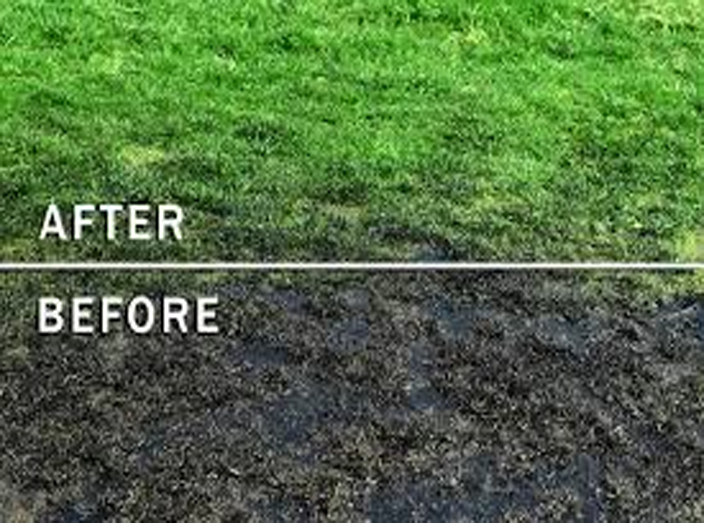Environmental Services for Bioremediation
Groundwater Remediation
Groundwater remediation is becoming more and more necessary. More than 50% of the United States uses groundwater for drinking. Most of our irrigation comes from groundwater. There are many sources that contaminate groundwater:
- Leaking Storage Tanks that contain chemicals, oil and gasoline
- Poorly functioning Septic Tank Systems
- Improperly stored and Uncontrolled Hazardous Waste
- Landfills that don’t have a protective bottom layer or the layer is damaged
- Chemicals used on lawns and farms to kill weeds and insects and to fertilize plants
Groundwater treatment of volatile compounds such as gasoline, have typically been treated by pumping the groundwater up into surface air strippers where the volatile compounds are cleaned from the water and the effluent returned either to the ground or some other disposal outlet.
In underground environments the collection and confirmation of microbial data proved especially challenging. This data evaluation required the expertise of many fields of study. Currently there is ample published data to evaluate and implement biological remediation efforts either singularly or in conjunction with other technologies (SVE, sparging, injection, etc).
Advanced Microbial Services personnel will collect and transport a determined volume of groundwater pumped from the area of contamination. This volume of water will contain a population of indigenous bacteria and other microbes, which have been able to live in, and make metabolic use of the contaminants targeted for remediation.

Upon receipt at our lab, the collected site liquid will undergo the following:
- Sample for microbial counts (Serial dilution plate counts).
- Adjustment of pH if necessary.
- Addition of microbial nutrient solution.
- Relocation into biological reactor for 72-84 hours. Or until cell mass reaches 1.5 x 109 cell/ml as confirmed by photometric methods in terms of turbidity. Turbidity readings of high cell concentrations (10-100’s of millions and above) are confirmed to be accurate via standardization plate counts.
- Storage of inoculum in cold storage (45° F) until delivery date.
Advanced Microbial Services will then make the first delivery of our Inoculum and schedule regular sampling to monitor the remediation process and make any adjustments necessary over time to the microbial solution. Sampling throughout the remediation project will provide data to confirm and quantify the increase in microbial population (cell count) as compared to a decrease in contaminant levels. The length of migration time and magnitudes of population increase will also be recorded.
Advanced Microbial Services provides microbial blends for groundwater remediation throughout the United States. We have blends capable of degrading fuel compounds including: MTBE as well as chlorinated hydrocarbons and solvents.Depending on the compounds that are impacting your site, we would use our Advanced Microbes 101, Advanced Microbes 201 or a combination of both.

Saltwater and Sodic Soil Reclamation
Saltwater spills are more common and damaging than oil spills. The high levels of sodium breaks the soil down into sand, making the soil almost useless for vegetation growth. As this is an obvious loss of income, it behooves all parties to remediate the land.
In the case of soil biotreatment, the mechanism may follow two paths. First, the excavation and treatment requires replacing the soil into the treatment area where mineral nutrients and external organisms may be added to the soil followed by missing to assure distribution throughout the soil.
Periodic mixing and addition of more nutrients and/or organisms serve to achieve homogeneity and the aeration of the soil. This scenario is often referred to as land farming, where microbes are in a sense being farmed, or tilled in to facilitate the degradation of the contaminating material.
Second, the soil treatment method, in situ, refers to the treating of the contaminated soil without removing it. Here mineral nutrients and organisms are added into the ground through wells, infiltration galleries or other means to allow the organisms to degrade the contaminating material where it is found. This is where our specially formulated L-GYP comes into play.
L-GYP is a true liquid gypsum formulated by Advanced Microbial Services. The calcium in this product is 100% soluble and since with normal gypsum products it can take 5 years for the calcium to dissolve, you can see how our product outperforms them by a landslide. If you want to get your site back to production or just get rid of the unsightly sand caused by sodic soil, Advanced Microbial Services has the quickest, easiest, most cost affordable service available.
Indigenous versus Inoculated
Most soils, especially shallow soils which include vegetation, will have an indigenous microbial population. The presence among that indigenous population of organisms with sophisticated degradation capabilities is highly variable. Long-term, chronic contaminated sites may show the presence of organisms capable of attacking the contaminated material if conditions of aeration and adequate mineral nutrition are present. Short term or emergency (spill) contamination sites are less likely to contain significant degradation populations. The addition of external microbes of known degradation capabilities will:
- Offset the possible absence of indigenous degraders
- Speed the contaminate removal
- Allow degradation to reach lower levels (greater removal) since artificially high numbers of organisms will be maintained in the soil where low nutrient levels would otherwise be unable to maintain high populations
Advanced Microbial Services supplies Clean Harbors, Trinity Services, SOS Environmental, Oklahoma Environmental Services, and A Clean Environmental with environmental remediation supplies and services.
